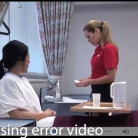
Active learning to reduce medication errors Faculty Spark - View, reflect and apply
Last updated on 25/02/2020
-
You must be signed in to access this function
2
Description
Medication errors are a patient safety and quality of care issue. The early exposure of nursing students to the impact, complexities and prevention of medication errors is one way to improve medication safety.
Challenge
The safe use of medications is a complex and potentially high risk activity. Nurses frequently administer medications and have a key role in promoting their safe use and the delivery of quality patient care. Medication errors can result in significant patient harm and rising healthcare costs. These errors are often influenced by factors such as the work environment, healthcare team and organisation rather than being the result of individual carelessness.
Undergraduate nursing curricula should prepare graduates to better understand this patient safety issue however it appears this area of emphasis is lacking. The early exposure of Bachelor of Nursing students to the impact, complexities and prevention of medication errors is one way to improve their medication safety knowledge and possibly influence future clinical practice. One challenge however, is that these students are yet to experience clinical placement, and have little understanding of the context in which the safe administration of medications is situated.
Jayne Hewitt and Dr Sharon Latimer have endeavoured to address these issues through Active Learning strategies.
Approach
To address the educational need, in light of the recognised challenge, we developed and embedded three targeted active learning strategies into the course. These strategies are:
- Scaffolded medication calculation competency where we link mathematical concepts to clinical practice. To achieve this we introduce the Australian national standard medication chart, clinical patient case scenarios, and placebo medications thus providing students with an authentic simulated learning environment where they are able to apply their medication calculation knowledge and skills.
- Understanding the roles of the healthcare professionals involved in the safe use of medications. We introduce nursing students to the role responsibilities of the registered nurse in this complex process. Importantly, students are taught how to think critically and communicate effectively with other healthcare professionals who also have integral roles in ensuring the harms associated with the use of medications is minimised. Finally,
- A series of short clinically focused digital recordings demonstrating the system factors associated with medication errors and potential prevention strategies.
Outcomes
Patient safety underpins all nursing practice, so embedding explicitly patient safety concepts into a first year course can raise student awareness of potential error producing situations. In particular, medication administration and the factors associated with medication errors are complex.
We received a Griffith University Health Ideas learning and teaching grant that supported the development and implementation of a suite of targeted active learning strategies. Delivery of these strategies in a variety of teaching modes raised nursing students' awareness of these complexities, as well as some of the pitfalls associated with medication administration.
Enabling Technology
To make explicit the abstract concepts associated with medication errors, a series of short digital recordings were developed and implemented in the course. These recordings demonstrated clinical medication scenarios related to poor interdisciplinary healthcare team communication, environmental factors such as noise, distractions and clutter; dispensing errors and the rationale for the continued use of 'rights' of medication administration.
For students, the recordings provided a simulated visual demonstration of the risk factors for medication error in a complex clinical environment. The scenarios highlighted that in many instances medication errors are not the failure of one person, rather they are the end result of a series of culminating events.
Viewing these recordings is often the students' first experience of a 'real' clinical setting, so teacher-facilitated discussions encourage active learning.
Support Resources
-
An education intervention to improve nursing students understanding of medication safety
Hewitt, J., Tower, M., & Latimer, S. (2015). An education intervention to improve nursing students understanding of medication safety. Nurse Education in Practice, 15(1), 17–21
-
Griffith Health IDEAS
Griffith Health Institute for the Development of Education And Scholarship
-
Engaging and Empowering Pedagogies (P2). Getting Started with VLE tools and the Course Design Standards.
Module
Contributed by
-
Griffith Health
School of Nursing and Midwifery
Jayne Hewitt
(07) 555 27702
j.hewitt@griffith.edu.au
http://orcid.org/0000-0002-6888-2666
Griffith Experts profile -
Griffith Health
School of Nursing and Midwifery
Dr Sharon Latimer
(07) 338 21082
s.latimer@griffith.edu.au
http://orcid.org/0000-0003-2704-150X
Griffith Experts profile -
Learning Futures
Licence
© 2024 Griffith University.
The Griffith material on this web page is licensed under a Creative Commons Attribution NonCommercial International License (CC BY-NC 4.0). This licence does not extend to any underlying software, nor any non-Griffith images used under permission or commercial licence (as indicated). Materials linked to from this web page are subject to separate copyright conditions.
Preferred Citation
(2020). Active learning to reduce medication errors. Retrieved from https://app.secure.griffith.edu.au/exlnt/entry/3585/view



